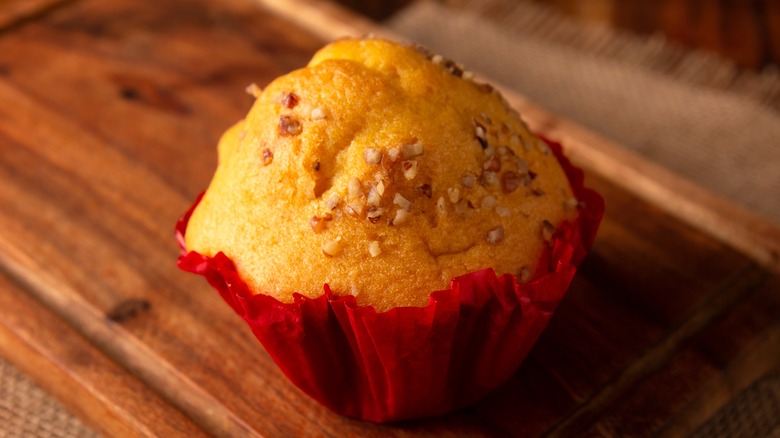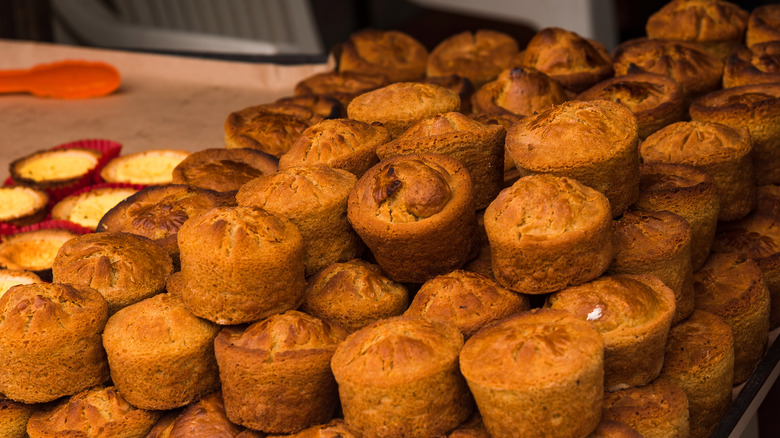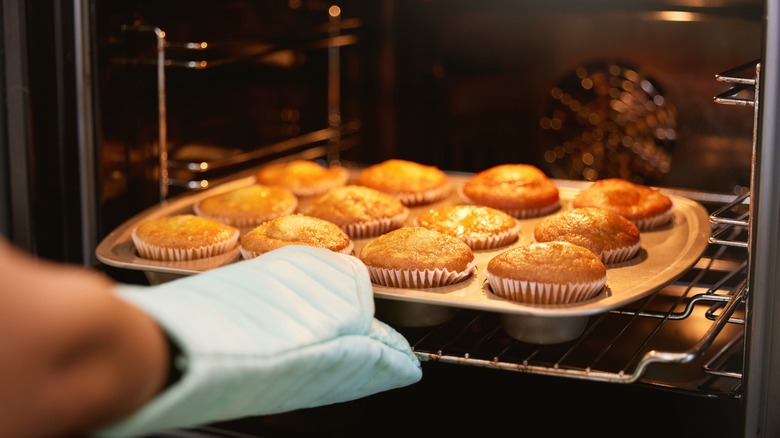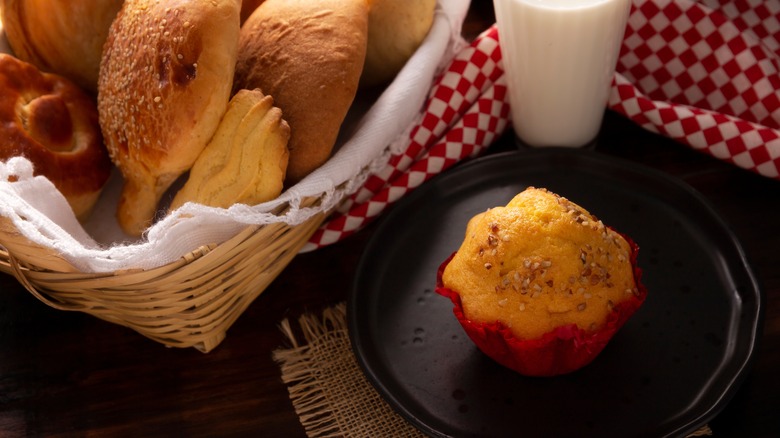Mantecadas Are The Simple Mexican Muffins To Add To Your Baking Routine
Say the word muffin, and images of fluffy, delicious bread come to mind. And whether you're a blueberry or chocolate chip muffin type, one quality of the pastry is clear — two muffins are rarely the same. For another take on the style, look to traditional Mexican cuisine and try the mantecada.
These smaller breads are contained in distinct red muffin papers, lending them a festive, eye-catching quality. Baked with only a few components, their unique characteristic is textural — each muffin has a delicious extra-crispy exterior while maintaining a soft interior. This quality arises due to a fat-based dough combined with a smaller size. Derived from a Spanish pastry made with butter, Mexican mantecadas can incorporate lard or liquid oils.
Today, these muffins are often sold packaged in Mexican markets. With a forgiving recipe that easily incorporates variations, it's not hard to understand their appeal. Let's dive into how tasty mantecadas came about.
The origins of mantecadas
The first iteration of these small muffins originated in Northern Spain. A variant made with butter continues to be linked to the city of Astorga, which carries an officially protected denomination of origin for the cake. From there, the muffin recipe spread to Mexico during the period of colonization, likely entering the port of Veracruz. Once in the New World, butter was less common, so Mexican bakers created a new iteration with lard.
The utilized fat is a cornerstone of the cake, as reflected in its name — manteca, which means butter or animal fat in Spanish. The new oil substitution not only altered the flavor of the cakes, but their texture, too: The top of the muffin developed a crack. Mexican bakers also occasionally flavored the cake with citrus, which was popular in the Veracruz province. As new iterations of the muffins continued, the mantecadas took on more unique characteristics, like their contained red paper. And so they emerged as a delicious culinary creation distinct from their Spanish predecessor.
How to make mantecadas
Mexican-style mantecadas rely on a quick-rising dough, similar to other muffin recipes. Baking powder is the typical leavening agent, often compounded with yeast. The body derives from a milk and egg combo, with an occasional buttermilk substitution offering a more tangy note. Assembly takes place similarly to other spongey bakes, with dry and wet ingredients mixed separately and then combined together. Recipes with yeast rest the batter for up to two hours before baking, but the step isn't always necessary.
Mantecadas are smaller in size than the typical American muffin. If you can't find the classic four-centimeter-high red muffin paper, pour less of the batter into the mold. The smaller shape aids in achieving the desired consistency. The muffin bakes at a high temperature — upwards of 400 degrees Fahrenheit — for around 30 minutes. Once the tops turn golden brown, they'll have a pleasantly crispy exterior while maintaining a soft, porous interior.
What you need to make mantecadas at home
Mantecada's staple ingredients are no frills — granulated sugar, all-purpose flour, whole milk, and eggs. Variations manifest most principally in the fat. In addition to the classic lard, butter is a frequent substitute. However, recipes sometimes also reach for vegetable oil or shortening.
Bakers also deviate with flavorings in the mix; a teaspoon of vanilla is a common addition but not a stalwart. Veracruz-style renditions add a citrus flair, incorporating orange flavors through extract and zest. This is often a prominent flavor — some recipes call for the zest of an entire orange, for a less sweet take on the dish. Lastly, some also add a dash of spice into the mix, like ground cinnamon. To add a caramelized tone, some bakers sprinkle the tops with sugar. No matter the rendition, the beauty of mantecadas is their forgiving nature. With a simple preparation but delectable texture, they're a tasty muffin worth a try.



